Chieftain Family Yangs’ cemetery found in Zunyi, Guizhou
From:Chinese Archaeology NetWriter:Date:2015-01-22
Chieftain (Tusi) generally refers to those tribal leaders in southwest part of China recognized as imperial officials by the central government from the Yuan dynasty and onwards. During 2013 and 2014, Guizhou Institute of Archaeology cooperated with CASS conducted the excavation of chieftain Yang’s family cemetery in Zunyi, Guizhou Province. The excavation discovered 3 tombs belonging to the clan of Yang. The cemetery faces to river and lies against the mountains.
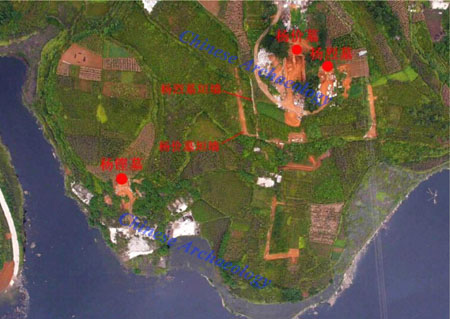
Aerial photographs of chieftain family Yangs’ cemetery in Bozhou, Guizhou
M1 is a large double-chambered joint tomb with single mound. There are two chambers for male and female respectively, located parallel. These flat-roofed chambers are rectangular, comprising of tomb roof, ground, walls, door stone and sealing slabs. Waist pits were dug in both chambers. Along the sacred way stand two stone statuses facing each other. There used to be ritual platforms built behind the statuses, with gravestones standing next to them. Due to the poor preservation, only fragments of the gravestones survived. Judging from the remaining inscription, M1 belongs to the Yang Lie couple, who were the 29th generation chieftain (Tusi) in Bozhou.
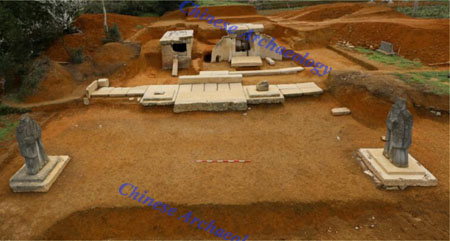
Tomb M1, belongs to the Yang Lie couple, who were the 29th generation chieftain (Tusi) in Bozhou
M2 is a tri-chambered joint tomb built with giant rocks. All the chambers are the same in structure and size, composing of front room, door and back room. In front of the door lie the sealing slabs and stone. Coffins were placed upon the ground stones. There is a waist pit located underneath the coffin in the middle chamber. As this grave was robbed, limited number of pottery horse-rider figures and bronze incense burners were excavated. Two boxes of epitaphs were discovered. According to the inscription, M2 is the tomb of the Yang Jian couple, who is the 21st generation chieftain (Tusi) in Bozhou and the first tusi during the Ming dynasty.
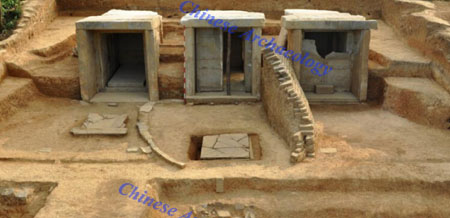
Tomb M2 of the Yang Jian couple, who is the 21st generation chieftain (Tusi) in Bozhou and the first tusi during the Ming dynasty
M3 is large shaft earth tomb comprising of tomb passage, double chambers and wooden outer coffins. The two chambers are same in size. Coffins have two layers (outer coffin and inner coffin), between which there are head box and side boxes. The waist pit is constructed by bricks and located underneath the coffin. From the head box of lady’s chamber 7 pieces of golden and silver artifacts were recovered while there were 32 pieces of golden and silver artifacts and 1 piece of jade excavated from male’s. Besides, there were also pieces of artifacts found scattering between the outer and inner coffins. Several golden and silver coffin nails along with bronze and silver decorations were excavated in situ. According to the graving goods, epitaph and other written records, this tomb belongs to the 14th generation chieftain (Tusi), the Yang Jia couple.
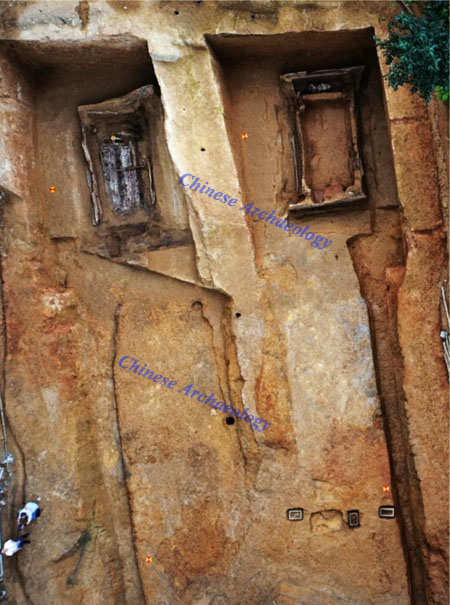
Tomb M3 belongs to the 14th generation chieftain (Tusi), the Yang Jia couple
The discovery of the chieftain Yang family cemetery is of great academic value.
First of all, this site is the sole cemetery of the chieftain (Tusi) family so far which has been fully excavated. The layout of the cemetery is well-organized and the family tree indicated by the tombs is also clear. Tombs were built between the late Song dynasty and the late Ming dynasty, which greatly contributes to our understanding of the Song, Yuan and Ming dynasties archaeology.

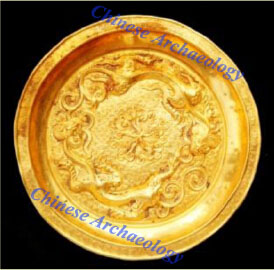
gold cup and plate unearthed from the lady's chamber of tomb M3
Secondly, Yangs’ cemetery manifests the transforming from feudal lords in the Song dynasty towards the native chieftain system in the Yuan and Ming dynasty. As the discovery of this site expands the sample size of the chieftain (Tusi) cemetery, it zooms in the development history of the chieftain (Tusi) system in the south-west region.
Thirdly, the Yang Jia couple’s grave is the only one among the chieftain (Tusi) family which is dug into a earth shaft and buried with wooden coffins. The whole set of golden and silver artifacts have survived thus casting light upon the funeral tradition and the handicraft industry technology in this region during the Song dynasty.
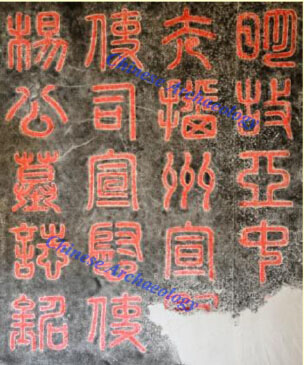
rubbings from tablet inscriptions in tomb M2, the Yang Jian couple
Last but not least, the chieftain (Tusi) cemetery is currently under assessment by the UNESCO as one of the World Heritage candidate. As the Yang Jia’s tomb is part of the remnants of the chieftain (Tusi) cemetery, its stratigraphy provides important evidence of dating the ancient Hailong castle (Hailong tun site) and ancient Yangma city (Yangmacheng site) nearby. (Translator: Dong Ningning)

